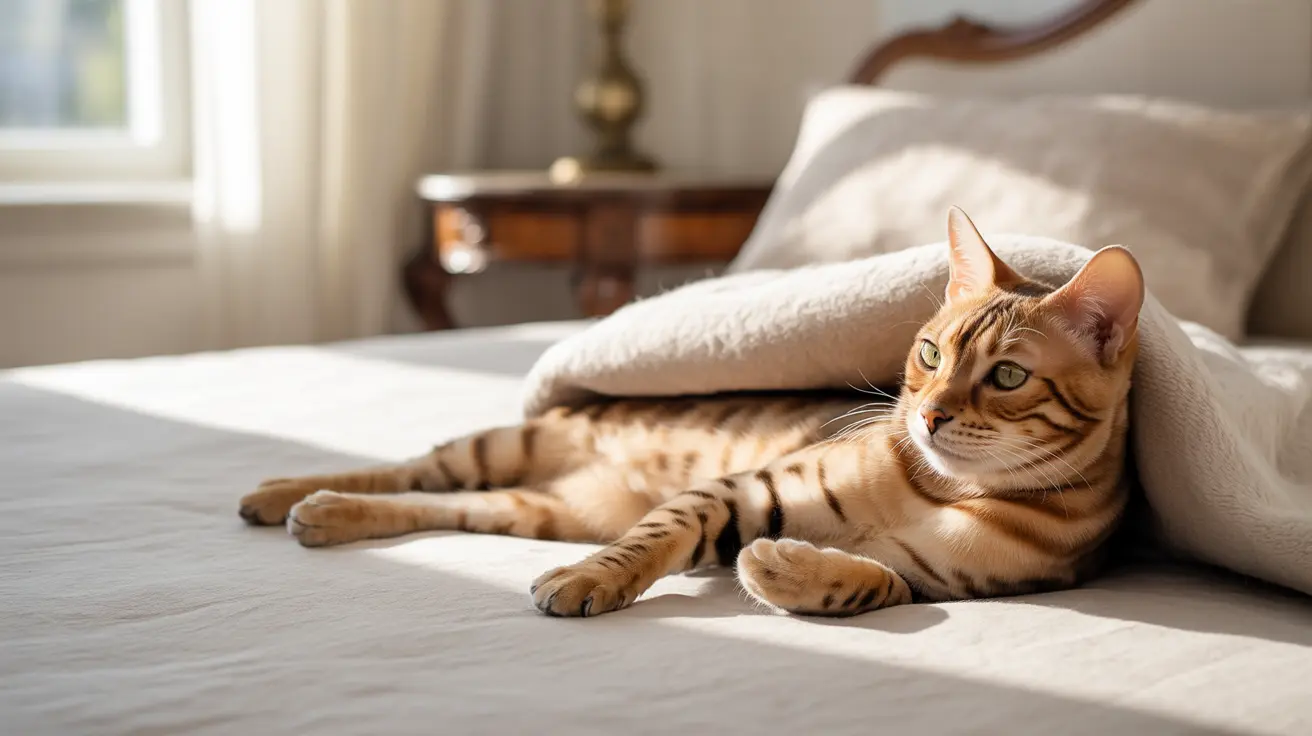Many cat owners have witnessed their feline friends burrowing under blankets for a cozy nap, but this common behavior often raises concerns about safety. While cats naturally seek out warm, enclosed spaces for rest, understanding the risks and benefits of cats sleeping under blankets is crucial for responsible pet care.
This comprehensive guide explores the safety aspects of cats sleeping under blankets, backed by veterinary expertise and scientific understanding of feline behavior. We'll examine why cats love this behavior, potential risks, and how to ensure your pet stays safe while indulging in their favorite sleeping habit.
Understanding Why Cats Sleep Under Blankets
Cats are natural burrowers with instincts that drive them to seek enclosed, protected spaces. When your cat crawls under a blanket, they're following ancestral behaviors that helped keep their wild predecessors safe from predators and weather elements.
This behavior also provides emotional benefits. The darkness and warmth remind cats of the security they felt as kittens huddled with their mothers and littermates. The weight and pressure of a light blanket can have a calming effect, similar to how weighted blankets work for humans.
Safety Considerations for Blanket Sleeping
Healthy adult cats typically have strong survival instincts and will move if they experience breathing difficulties. However, certain factors require careful consideration:
Breathable Materials Matter
Choose lightweight, breathable fabrics like cotton for any bedding your cat might sleep under. Avoid heavy materials, plastic-based fabrics, or weighted blankets that could restrict airflow or movement.
Temperature Regulation
Cats can overheat when sleeping under blankets, especially in warm weather. Monitor room temperature and watch for signs of overheating such as excessive panting or lethargy.
Special Cases and Risk Factors
Kittens and Senior Cats
Extra caution is needed for very young or elderly cats. Kittens may not have the strength or instincts to escape if they become trapped, while senior cats might have mobility issues that make it harder to move quickly if needed.
Health Conditions
Cats with respiratory issues, obesity, or other health concerns may need closer supervision when sleeping under blankets. Consult your veterinarian if your cat has any underlying conditions.
Creating a Safe Sleeping Environment
Follow these guidelines to ensure your cat can safely enjoy sleeping under blankets:
- Ensure blankets are loose enough for easy escape
- Create multiple access points for entry and exit
- Check regularly on kittens or cats with health issues
- Remove heavy or non-breathable materials from sleeping areas
- Keep room temperature moderate
Frequently Asked Questions
Is it safe for my cat to sleep under a blanket, and how can I ensure their safety?
Yes, it's generally safe for healthy adult cats to sleep under blankets. Ensure safety by using lightweight, breathable materials and leaving easy access points for your cat to enter and exit freely.
What types of blankets are best suited for cats to sleep under without risk of suffocation?
Light cotton blankets or thin fleece materials are ideal. Avoid heavy weighted blankets, thick comforters, or materials with poor airflow like plastic-based fabrics.
Are there any risks for kittens or elderly cats sleeping under blankets compared to healthy adult cats?
Yes, kittens and elderly cats face higher risks due to potentially limited strength or mobility. They should be monitored more closely and may need assistance accessing or leaving blanket-covered areas.
How can I tell if my cat is having trouble breathing or overheating when sleeping under a blanket?
Watch for signs like rapid breathing, panting, lethargy, or unusual restlessness. If you notice these symptoms, help your cat out from under the blanket and ensure they have access to fresh air.
Why do cats like to burrow and sleep under blankets, and how does this behavior benefit them?
Cats burrow for security, warmth, and comfort. This behavior provides emotional benefits through darkness and pressure, mimicking the secure feeling of being with their mother as kittens.
By following these guidelines and understanding your cat's individual needs, you can ensure their blanket-sleeping habit remains a safe and enjoyable experience. Remember to always monitor new behaviors and consult with your veterinarian if you have specific concerns about your cat's sleeping habits.






